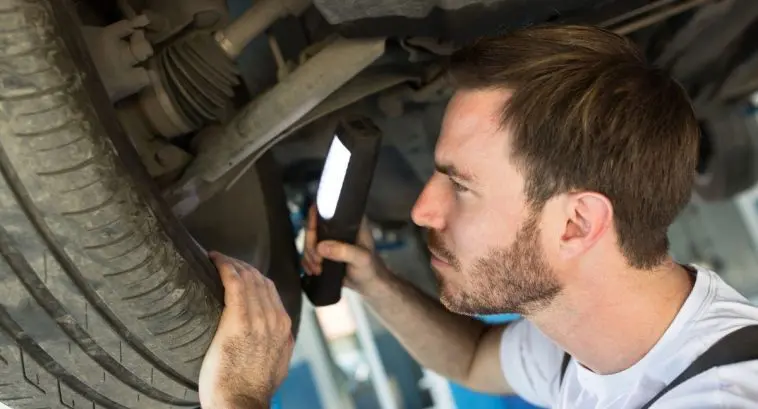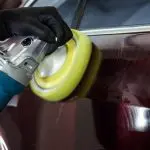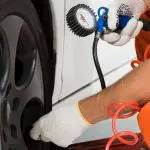Every vehicle is made up of the suspension system, and the control arm, sometimes referred to as the A-arm, is a crucial part of this system.
This part controls the motion of your wheels, enabling you to have a smooth ride.
As time goes, your control arm gets worn out due to the amount of friction involved, and thus they should be replaced to ensure the smooth running of your vehicle.
In case you happen to have a broken control arm, the part produces some symptoms, and if you have experience as a driver, you can quickly notice them.
Below are some of the signs:
- Your Steering Becomes Unstable
- Your Vehicle Produces A Popping Sound When You Run Over Bumps
- Your Tire Wears Unevenly
- The Driving Performance of Your Vehicle Is Affected
- There Is A Significant Change In How Your Brakes Operate
Therefore, as an experienced driver, you can quickly notice these changes in your vehicle and take action needed.
The control arms play a significant role in ensuring that your car provides you great comfort while driving without causing unnecessary problems.
Always remember if your control arm goes terrible, take immediate action, and replace it.
TABLE OF CONTENTS
What Does A Control Arm Do?
Depending on what vehicle you have, your vehicle can have two or four control arms. When they are two, it is referred to as a car lower control arm, and this is mainly found in simple cars.
Vehicles with four control arms are a few cars, and most heavy-duty vehicles have either of the two control arms.
The A-arms’ primary function is to act as a suspension link, which joins the car’s fame to the steering knuckle on the front wheel.
Between the system is a pair of rubber bushings that join the arms to the framework of the car. The rubbers ensure that the amount of friction on the joints is reduced.
Another function is that the arms move in an upward and downward direction when your car travels in rough terrain or comes across potholes to allow the tires to move smoothly.
In other words, your front wheels remain intact with the road because of this system.
With the help of a ball joint and a bushing, the triangle-shaped end connects to the frame to move the bushing while the other end joins the steering knuckle and enters the ball joint.
Is Driving With A Bad Control Arm Dangerous?
Because all control arms are connected to your car frame body by using soft rubber bushings known as control arm bushings, they are easily worn out due to the upward and downward movement of the control arm, which causes friction.
Too much friction leads to excessive wear of your A-arm, and this means that it is not safe to drive with a bent or damaged control arm.
5 Things Will Happen If Your Control Arm Breaks When Driving
A broken control arm can make your day worse. This is because you are not going to enjoy a smooth ride with a broken control arm.
You are going to have an unpleasant driving experience alongside other troubles. The only way to stop this is if you replace the broken arm.
1. Your Steering Becomes Unstable
Assuming that you have been driving with a worn-out arm, your arm may have a bend, which means it has broken after your arm breaks are ready to have a hard time with your steering because a bend on the arm causes a significant effect on your steering performance.
You will notice this when you want to break or when driving on rough terrain.
2. Your Vehicle Produces A Popping Sound When You Run Over Bumps
Assuming that you want to make a turn or suddenly bump into a pothole, then you hear a popping sound or the sound is produced when accelerating or decelerating; those are some of the outcomes of a faulty control arm.
The sound is a result of loose rubber bushings or ball joints since they bang when you accelerate and decelerate or come across a bump or pothole.
3. Your Tire Wear Unevenly
Since one of the functions of the control arm is to free up the movement of the tires to give you a smooth ride if the arm wears, it means that the tire tread will be wearing unevenly due to the friction force exerted on them as you drive.
4. The Driving Performance Of Your Vehicle Is Affected
When you drive through road bumps and potholes or rocks, all the shock is absorbed by bushings of the control arm.
When the arm breaks in the event of your journey, it makes your vehicles produce a continuous vibrating sound.
The metal pieces on the control arm rattle continuously, leading to the production of a clunking sound that can annoy you. The front wheels mostly produce the sound.
5. There Is A Significant Change In How Your Brakes Operate
In case you are an experienced driver, you will suddenly experience your brakes when you are forced to make a stop. This may result from partial damage to your car’s control arm bushings.
Your brake parts become affected because of the backward and forward movement of the control arm becomes lost because of wearing of the bushings.
As a good driver, you can notice that such situations make your braking system unstable.
What Causes A Bad Control Arm?
As you operate your vehicle, your car’s lower control, arm bushing may be damaged, and when this happens, the suspension system of your vehicle will not be firmly attached to the frame.
As a result, you will start experiencing problems related to the steering, and your driving experience will not be smooth. You are therefore required to have a know how of some causes of arm damage.
Some of them are discussed below:
1. Wear And Tear Due To Friction
Any time you turn on your engine and start driving, be aware that you are subjecting the lower arm to a lot of stress, and the bushings receive even more stress because it should ensure the arm is attached to the frame.
As you drive friction acts on the arm and therefore it is worn out in the process, and once you hear clunking noises, this is a sign that you have a damaged bushing that needs repair as soon as possible.
2. Driving On Rough Terrain
When you frequently drive on rocky terrain or a road with too many potholes with high speed, you are subjecting your arms to abuse, which will eventually lead to loosening the bushing as a result of too many vibrations and roughness experienced from these driving hazards.
If this behavior continues, then the bushing is forced to bang a lot and gets damaged.
3. Unintended Damage
The lower control arm bushing is designed in such a way that it is such a small and delicate vehicle part.
Assuming that your mechanic is servicing your vehicle and they happen to tamper with the lower control arm bushing, they could damage it while repairing your suspension system.
The bushing may be already worn out because of long usage, and this makes it prone to damage if not handled carefully. If the bushing is damaged, a lot of disgusting clunking sound is produced.
4. Sudden Acceleration
Assuming that you are the type of driver who turns on your engine and steps on the gas pedal, you should be cautious of these actions.
Sudden acceleration results in a lot of pressure on your control arm bushing.
If this is done repeatedly, your vehicle’s bushing becomes loose, leading to knocking inside the suspension system.
5. Loosely Tightened Arms
After every inspection on your vehicle’s suspension system, ensure that the control arm bushings are tightly closed to stay for a long time and intact.
Loose bushings knock inside the system continuously, which is annoying because of the sounds produced by this action.
If a mechanic forgets to tighten the arms, the bushing gets damaged because of the continuous knocking into the suspension system components.
Therefore, you should ensure that your bushings are well fit back to the control arm after service to avoid damage to your vehicle.
You should also avoid driving your vehicle in rough terrain on high speed to ensure your arms have a long lifetime.
How Do You Solve Control Arm Problems?
When you are set off for an important meeting and then experience challenges with your vehicle in the form of a broken arm, this can lower your moods.
As discussed above, a broken control arm brings about a lot of problems and below are some of some practices you can do to contain your failed control arm.
- Correct your axle
- Sing your control arm
- Align the wheels of your vehicle
- Carry out a test on acceleration and turning
When Should You Replace Your Control Arms?
You are already aware that friction force acts on your suspension system, and as time goes by, your control arms wear out and should be replaced.
Most control arms wear down after your vehicle has operated for an average of 90,000 to 100,000 miles.
After this mileage is reached, your arms can easily bend or break when you drive over bumps or potholes.
What Is The Cost Of Replacing A Broken Control Arm?
As soon as you see or hear any sins of a broken control arm, you should replace it immediately.
The cost of replacing a control arm ranges between $117 to $306 in most vehicles. It may take at most two hours to completely replace the part itself, which costs $42 to $103.
How To Check A Faulty Control Arm Before Replacing It
You can use different methods to diagnose a faulty front control arm, control arm bushings, and the ball joints for damage.
You should jack your car to perform the inspection safely. Always remember to use safety glasses.
Below are general guidelines on how to check for faulty control arms:
- Carry out a visual inspection by checking the control arm itself for damages like cracks and rust.
- Check the bushings for play by placing a pry bar on the control arm near the bushing and move the control arm back and forth with reduced force.
- Depending on your car’s suspension, check the ball joints for play. You are required to check the joint for horizontal and vertical plays by pushing the pry on the wheel assembly.
Some joints have indicators, which makes it simple to measure wear by using this design while your vehicle is on the ground.
You can check the indicator if it is receded to the joint, and if it is, the connection is worn, and it needs replacement.
How To Replace A Control Arm
Before you enter the process, you should remember that vehicles are not the same, and you should follow the installation rules of the application you are doing.
You can use repair manuals to give you detailed information on how you will go about the replacement.
Below are guidelines for replacing your faulty control arm:
Step 1: Removing The Control Arm
You should start by removing the control arm and ensuring you have safety glasses.
- Loosen the wheel lug nuts by use of a breaker, but do not remove them completely. Jack, your vehicle and choke the rear wheels and set the parking brakes. Remove the wheel and the tire assembly.
- In case your sway bar link is equipped, unbolt it from the control arm and remove the cotter pin from the castle nut and remove the castle nut from the ball joint.
- Separate the ball joint and steering knuckle and remove the bolts securing the control arm connecting to the frame.
- Remove the control arm from its brackets in the frame, and if it doesn’t come out easily, use a pry bar to remove it.
Step 2: Installing A New Control Arm
After the faulty arm is removed, compare it to the new arm to make sure they are of the same make.
- Insert the new arm to the mounting bracket in the frame and replace the bolts that attach the control arm to the frame and do not tighten them as you will toque them later.
- Put the ball joint firmly into the knuckle and install the castle nut on the joint and tighten the compartment by use of a torque wrench.
- Put a new cotter pin, which may come with the new arm into the castle nut and attach your sway bar link in case it is equipped to the control arm. At this point, use a torque wrench to tighten the nut.
- Return the tire assembly to the lug nuts and tighten them until they are snug by use of socket and ratchet.
- Safely unjack your vehicle and by use of a torque wrench, tighten the lug nuts.
- Having the vehicle on its normal driving height, use the torque wrench to tighten the arm bolts and take the vehicle to an auto repair shop for alignment checking by a professional mechanic.
Before you start this process, always read the factory’s repair information carefully because if you do not follow manufacturers’ specifications, you can injure yourself or damage some important and expensive parts.
What Are The Pros And Cons Of Replacing The Upper Arm?
People have different views regarding how long the arms should take before they get replaced again. Aftermarket replacement of control arms has its pros and cons as discussed below:
Pros
- Your vehicle has increased suspension travel
- Depending on the shocks of your vehicle, your vehicle acquires an improved riding quality
- You get an upgraded ball joint
- You also get an increased ride height if that’s what you needed
Cons
- When you use spacer lifts, they can reduce your ride quality
- Spacer lifts also increase wear on your factory ball joints
- In case you use spacer lifts, they can cause significant damage in case they are compressed fully while off-road
How Long Can You Drive With Bad Control Arm Bushings?
Assuming that you have already seen the signs that your control arm has gone bad, driving safely with the required speed and on good terrain, you can drive your car for a week and a half before replacing the control arm.
However, it is advisable to replace it immediately. You start seeing the signs to prevent further damage to expensive parts.
Conclusion
Control arms play a significant role in ensuring that you have a smooth ride.
When replacing the arms, it is unnecessary to replace all the arms, but be assured that if one has failed, the other arm will also fail soon.
Ensure your bushings are done well if you decide to assemble the whole suspension system.
Always go for wheel alignment after the repair to ensure you don’t end up with an uneven tire to reduce the cost of replacing the tires.
Have a regular check up on your control arms to ensure that your vehicle and safety are not endangered.
Sources:
1. CAR FROM JAPAN – https://carfromjapan.com/article/car-maintenance/what-happens-if-control-arm-breaks-while-driving/
2. National Driving School – https://nationaldrivingschool.ie/what-happens-if-control-arm-breaks-while-driving




